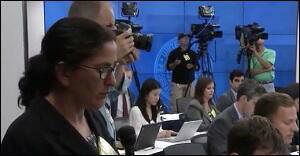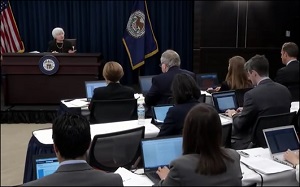Re: Yes Virginia...It's a Bubble...
Well it took a couple of more years, but the inevitable is finally underway:
Published: Aug 21, 2015 1:16 p.m. ET
Barclays published wide-ranging revisions to all of their foreign currency forecasts.
According to Barclay’s outlook, downward pressure will be greatest for other Asian currencies—the analysts singled out the currencies of Taiwan, Korea and Malaysia as among the most vulnerable—as weakening economic growth scares off investors, who no longer want to shoulder the risk of funding large current-account deficits...
...The currencies of exporters like the Australian dollar, New Zealand dollar, South African rand will likely depreciate by 7% to 8% against the dollar by the middle of next year....
..."Furthermore, if Fed policymakers are dissuaded from policy firming due to risks from China, it is even more likely that other major central banks’ policies will push back tightening or move toward outright easing,” Barclays said.
China’s yuan has been steady all week, prompting some currency strategists to speculate that policy makers in Beijing have kept it pegged despite ceding more control over its valuation to market forces.
At a news conference last week, PBOC Deputy Governor Yi Gang denied that the central bank intends to push the yuan lower, saying further weakness would be inconsistent with the currency’s fundamental value. [MRDA ]
]
Originally posted by GRG55
View Post
Published: Aug 21, 2015 1:16 p.m. ET
Strategists at Barclays expect the yuan, also known as the renminbi, to weaken around 8% against the dollar over the next two years—and they expect it to drag most of the world’s currencies down with it.
That could mean more pain for stocks and for emerging-currencies, which have been hammered since the People’s Bank of China’s decision to devalue the yuan starting Aug. 11.
That could mean more pain for stocks and for emerging-currencies, which have been hammered since the People’s Bank of China’s decision to devalue the yuan starting Aug. 11.
Barclays published wide-ranging revisions to all of their foreign currency forecasts.
According to Barclay’s outlook, downward pressure will be greatest for other Asian currencies—the analysts singled out the currencies of Taiwan, Korea and Malaysia as among the most vulnerable—as weakening economic growth scares off investors, who no longer want to shoulder the risk of funding large current-account deficits...
...The currencies of exporters like the Australian dollar, New Zealand dollar, South African rand will likely depreciate by 7% to 8% against the dollar by the middle of next year....
..."Furthermore, if Fed policymakers are dissuaded from policy firming due to risks from China, it is even more likely that other major central banks’ policies will push back tightening or move toward outright easing,” Barclays said.
China’s yuan has been steady all week, prompting some currency strategists to speculate that policy makers in Beijing have kept it pegged despite ceding more control over its valuation to market forces.
At a news conference last week, PBOC Deputy Governor Yi Gang denied that the central bank intends to push the yuan lower, saying further weakness would be inconsistent with the currency’s fundamental value. [MRDA
 ]
]



Comment